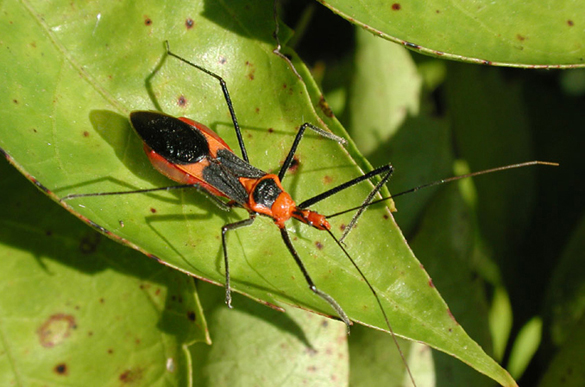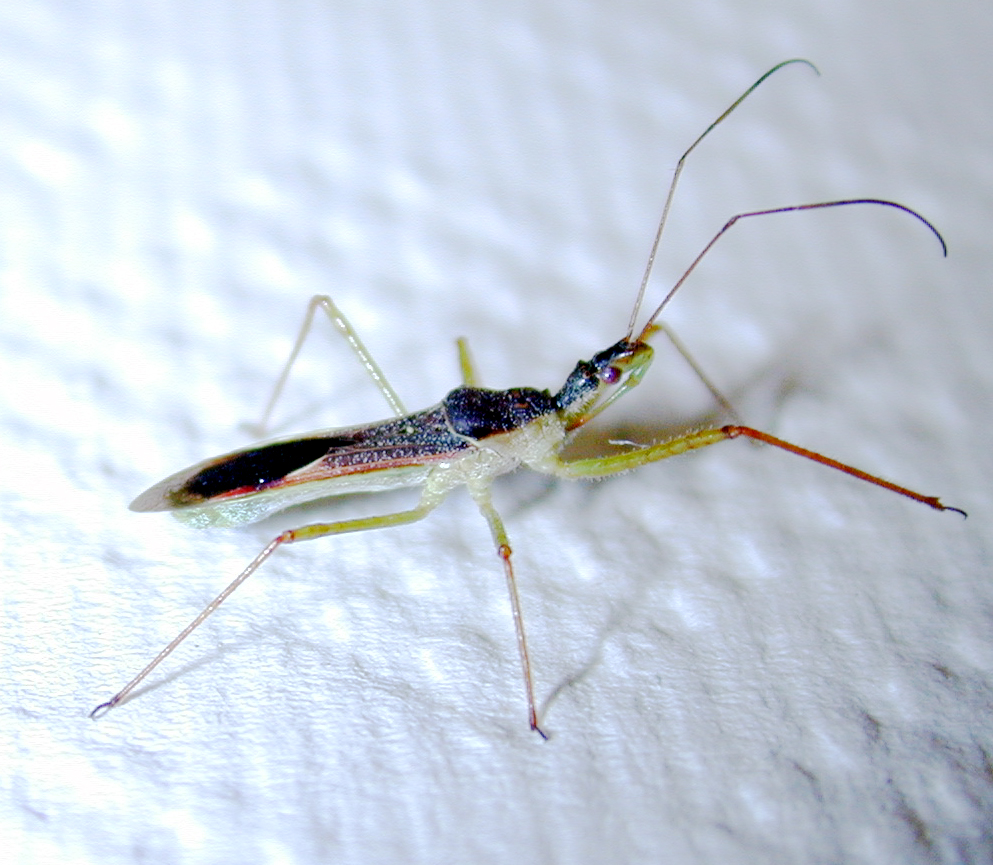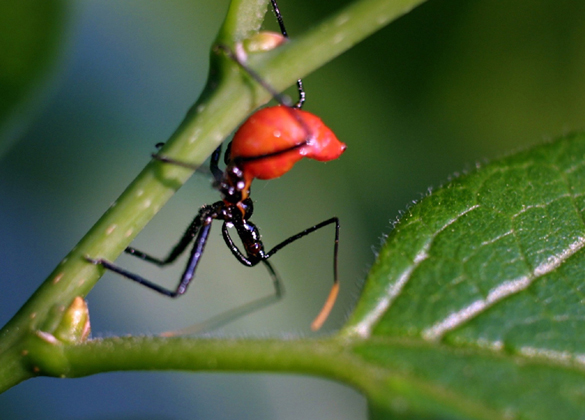
Zelus longipes, the milkweed assassin bug, is one of most common assassin bugs around Galveston Co. Photo by William Johnson.
Assassin bugs (family Reduviidae) are predatory insects that are of great benefit to gardeners. They are proficient at capturing and feeding on a wide variety of prey including other bugs, bees, flies, and caterpillars. Prey are captured with a quick stab of the assassin bug’s long mouthparts. After being immobilized by a paralyzing toxin, the prey’s body fluids are then drawn through the assassin bug’s soda straw-like mouthparts.
Most species of assassin bugs are gray to black or brownish in color, though some are brightly colored. Zelus is a common genus with several species in Texas. The milkweed assassin bug, Zelus longipes, is the most distinctive species. At least one species of Zelus has been reported as a household invader in the fall and winter.
Ambush bugs are a type of assassin bug that lie in wait for their prey on flowers. Some of these species are colored to blend in perfectly with their flower hiding places.
The wheel bug is the largest of the 150 or so species of assassin bugs known from North America. Adult wheel bugs are gray and approximately 3 cm (1 ¼ inches) long. Its name comes from the distinctive, cog-like crest arising from the top of the thorax, or middle section, of the wheel bug’s body (see photo). Wheel bugs will attack larger insects like grasshoppers and larger caterpillars.
Although most assassin bugs are highly beneficial, the cone nosed bug, or kissing bug, is parasitic on humans and other mammals. Cone nosed bugs have the same elongated head as the wheel bug, but can be distinguished from wheel bugs by their lack of a crest and by their orange and black markings where the abdomen extends laterally past the folding wings.
Bites from wheel bugs
Some assassin bugs, most notably the wheel bug, will bite if picked up and handled carelessly. The bite of the wheel bug is immediately and intensely painful. Persons who are bitten should wash and apply antiseptic to the site of the bite. Oral analgesics, such as aspirin or ibuprofen, may be useful to reduce the pain. Treatment by a physician is not usually needed, though Caladryl® or topical corticosteroids may help reduce swelling or itching at the site of the bite. As with any insect sting or bite, the victim should seek medical attention immediately if there is any sign of anaphylactic reaction, such as generalized swelling, itching, hives or difficulty breathing.
Control
Because assassin bugs are predatory insects, and beneficial for the garden, control is not recommended. Assassin bugs, including wheel bugs, are generally not very abundant and do not require insecticidal sprays.
For more information
Additional publications, and help with other questions about garden insects or other pest problems, can be obtained by contacting your local county Extension office. For information about conenosed bugs, see F@ctsheet ENT-3008.
Author
Michael Merchant, Ph.D., Professor and Extension Urban Entomologist, Texas AgriLife Extension Service


